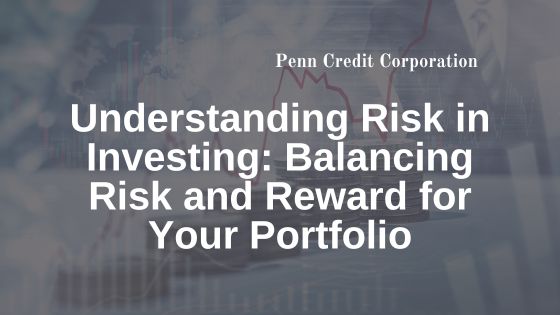Investing is inherently associated with risk. While the potential for higher returns is often the primary motivation for investing, it’s essential to understand and manage the risks involved to protect your investment portfolio. In this blog post, we’ll explore the concept of risk in investing, the different types of risks investors face, and strategies for balancing risk and reward in your investment portfolio.
What is the Risk in Investing?
Risk in investing refers to the possibility of losing money or not achieving expected returns on an investment. All investments carry some level of risk, and understanding and managing these risks are essential for successful investing.
Types of Investment Risks
- Market Risk: Market risk, also known as systematic risk, refers to the risk of losses due to factors affecting the overall market, such as economic conditions, interest rates, inflation, and geopolitical events. Market risk cannot be diversified away and affects all investments to some extent.
- Credit Risk: Credit risk is the risk that a borrower will fail to repay a loan or debt obligation, resulting in losses for the lender or investor. It is prevalent in fixed-income investments such as bonds, where the issuer’s creditworthiness affects the investment’s risk and return.
- Liquidity Risk: Liquidity risk refers to the risk of not being able to sell an investment quickly or at a fair price due to insufficient market demand or trading volume. Illiquid investments may require investors to accept lower prices to sell or hold investments longer than anticipated.
- Inflation Risk: Inflation risk, also known as purchasing power risk, refers to the risk that inflation will erode the purchasing power of your investment returns over time. Investments with fixed returns, such as bonds and cash, are particularly susceptible to inflation risk.
- Political and Regulatory Risk: Political and regulatory risk refers to losses due to changes in government policies, regulations, or geopolitical events that impact investment values or returns. This risk is prevalent in international investments and industries subject to government oversight.
Balancing Risk and Reward
While it’s impossible to eliminate risk from investing, investors can take steps to manage and mitigate risk effectively. Here are some strategies for balancing risk and reward in your investment portfolio:
- Diversification: Diversification is a fundamental strategy for managing investment risk. It involves spreading investments across different asset classes, sectors, and geographic regions. This can help reduce the impact of individual investment losses and improve the overall risk-adjusted return of your portfolio.
- Asset Allocation: Asset allocation involves determining the mix of asset classes, such as stocks, bonds, cash, and alternative investments, in your portfolio based on your investment goals, risk tolerance, and time horizon. A well-diversified asset allocation strategy can help balance risk and reward and achieve long-term investment objectives.
- Risk Management Strategies: Implement risk management strategies such as setting stop-loss orders, using hedging techniques, and employing portfolio rebalancing to manage investment risk effectively. These strategies can help limit losses during market downturns and preserve capital over the long term.
- Regular Monitoring and Review: Regularly monitor your investment portfolio and review your investment strategy to ensure it remains aligned with your financial goals and risk tolerance. Adjust your portfolio as needed based on changes in market conditions, economic outlook, and personal circumstances.
Conclusion
Understanding and managing investment risk is essential for building a successful portfolio and achieving financial goals. By identifying different types of investment risks, implementing risk management strategies, and balancing risk and reward through diversification and asset allocation, investors can navigate the market’s uncertainties and achieve long-term investment success. Remember that risk is inherent in investing, and while seeking higher returns, it’s crucial to strike a balance that aligns with your risk tolerance and investment objectives.

